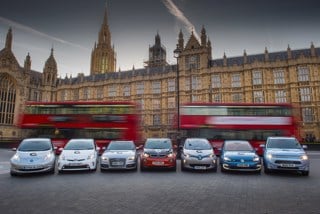By Matt Dale head of consultancy for ALD Automotive
The debate about electric vehicles (EVs) is running out of excuses.
Watch: Everything you need to know about implementing an EV strategy
Simply put, the financial benefits are now undeniable, and we no longer need to debate the environmental benefits, particularly after the summer we have had and recent reports on climate change.
While manufacturers are working hard to improve their EV offerings, the push from legislation and taxation incentives are also making these vehicles more attractive.
With the launch of the first of the clean air zones just over a year away, fleets need to act now to make sure their staff mobility
policies remain viable into the future.
Yet, the switch to EVs has been slow. It seems that the last remaining obstacles centre on the battery range and the charging network. But this is simply filled with red herrings.
Firstly, our own research – a real world PHEV trial conducted last year using data compiled by ProFleet – has shown that over three-quarters of daily journeys could be completed using EVs.
This is increasing all the time as more vehicles enter the market with ranges exceeding 125 miles on a single charge. It won’t be long before EVs can comfortably exceed 200 miles, at which point 94% of journeys could be completed using purely electric power.
Our research was based on the assumption of a single daily charge, suggesting that as infrastructure improves, more EV journeys will be viable.
But according to OFGEM, 87% of EV charging is done at home, with a further 12% being charged at work or another destination, leaving just 1% of charging being carried out en-route.
This suggests that battery charging is actually more convenient than having to make a scheduled stop for fuel, because it can be carried out while the vehicle is not being used.
With home chargers standard in many new houses and Government grants available, more homes are becoming equipped to cater for fully battery EVs.
Two final thoughts: if you obtain your electricity through solar panels, you can charge your EV for free and release any unused power back into the grid.
Further, the latest EV model is the Hyundai Kona, with a range of 300 miles. These might seem like scenarios of the future, but both already exist. There really are no excuses left.



















Login to comment
Comments
No comments have been made yet.